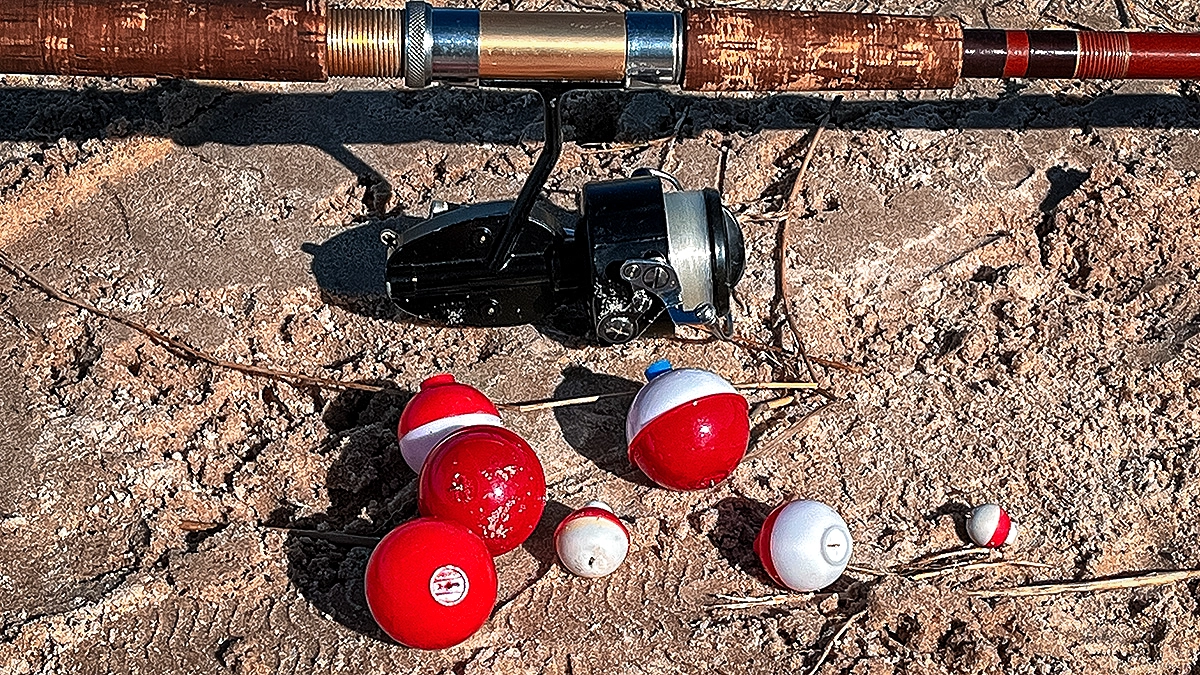They’re one of the most basic pieces of fishing tackle — what every kid starts fishing with when they can barely even handle a toy rod. It’s not a complicated piece of gear: just a tiny buoy marking a fishing line. A lot of people look down their noses at fishing using bobbers and they don’t get a lot of attention. But they’re a vital piece of tackle that detect bites, control bait depth, and play into many overall fishing strategies.
It’s also a tool anglers have been using for centuries in one form or another, and they have, of course, evolved over all that time, but their purpose remains the same: alerting anglers to bites from their quarry hidden below the surface. From beginners to seasoned vets, everyone can benefit from fishing with a bobber.
Nick Morrison is the manager of The Florida Angler, a prominent tackle shop in my neck of the woods: Clermont, Florida. He knows just about all there is to know about bobbers and took me on a deep dive exploring this under appreciated piece of fishing gear and its applications.
What is a Fishing Bobber?
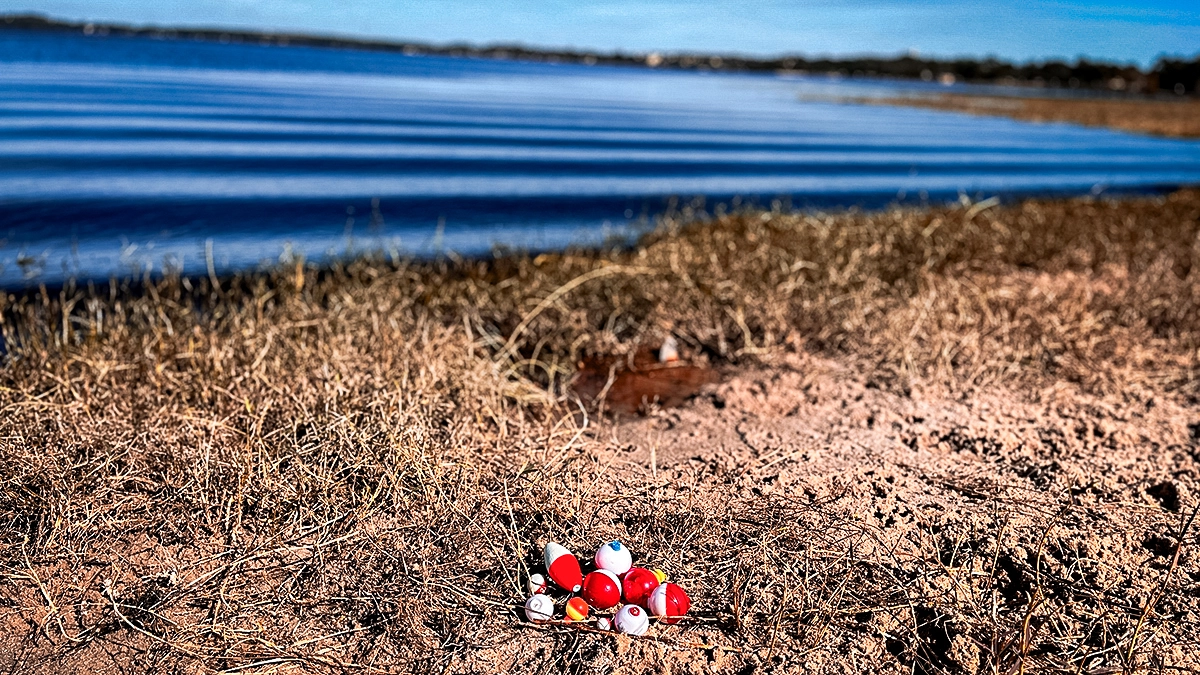
Sometimes called a float, bobbers are either brightly colored or clear if they’re made of plastic. But they can be made from many materials including wood and cork — essentially a bobber can be made from almost any material that floats and can be attached to a line, so that it moves on the surface when the line moves underwater.
Today, there are several types of bobbers out there, but the most common are fixed, spring, and slip bobbers.
Bobber Anatomy Lesson
Despite the wide variety and long history of bobbers, they all have one basic element: a buoyant body that is usually cylindrical, spherical, or egg-shaped. This buoyant body is then attached to a fishing line in some way.
Its role is also consistent and simple — once attached to the fishing line it floats on the water’s surface. When a fish hits the bait, the bobber moves, sinks, or disappears beneath the water, letting the angler know there’s a fish on the line.
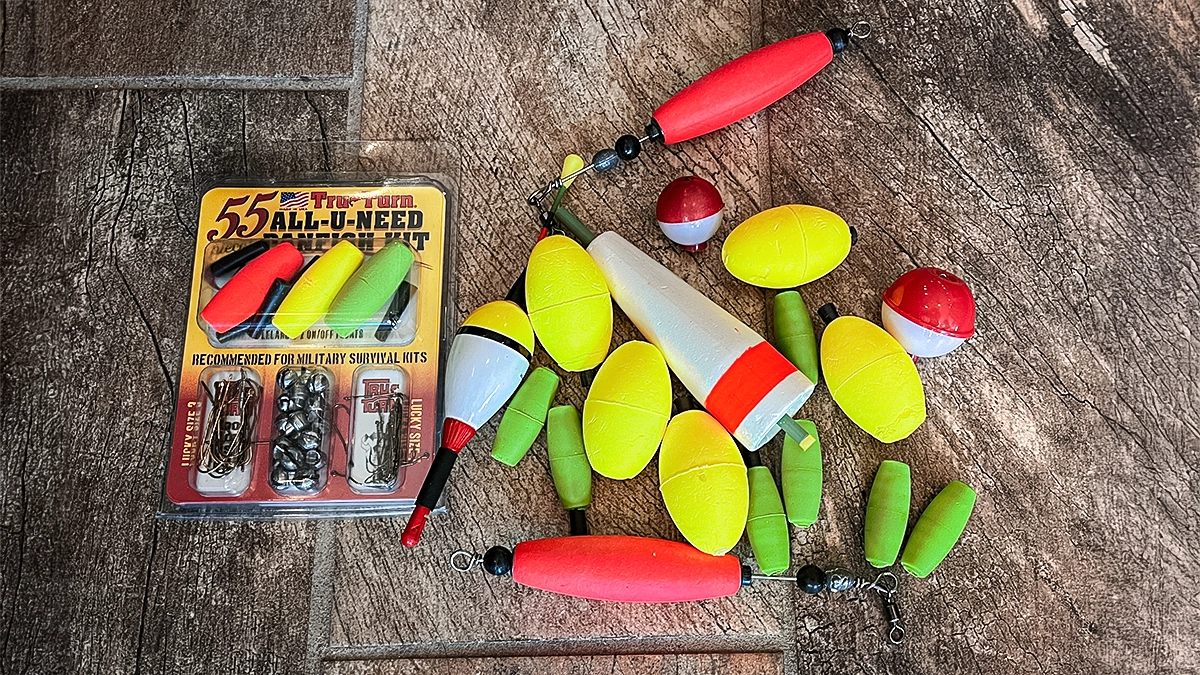
A modern bobber includes the following components:
Body: This is the part of the bobber that floats and is typically made of cork, plastic, or foam. The weight of the body is calibrated to suspend the line at a desired depth.
Spring or Clip: The body is attached to the line with a small spring or a clip that allows an angler to adjust the bobber’s float depth depending on the type of fishing being done.
Weight: Some bobber designs include built-in weights that keep them balanced and help them stay upright when floating. They also provide the stability needed to detect more subtle hits. The weights also give the bobber some mass that helps with casting.
Bobbers are usually brightly colored with pairings of white, red, yellow, or orange so they are easily visible and so that movement can be seen more easily.
Bobber Uses and Fishing Styles
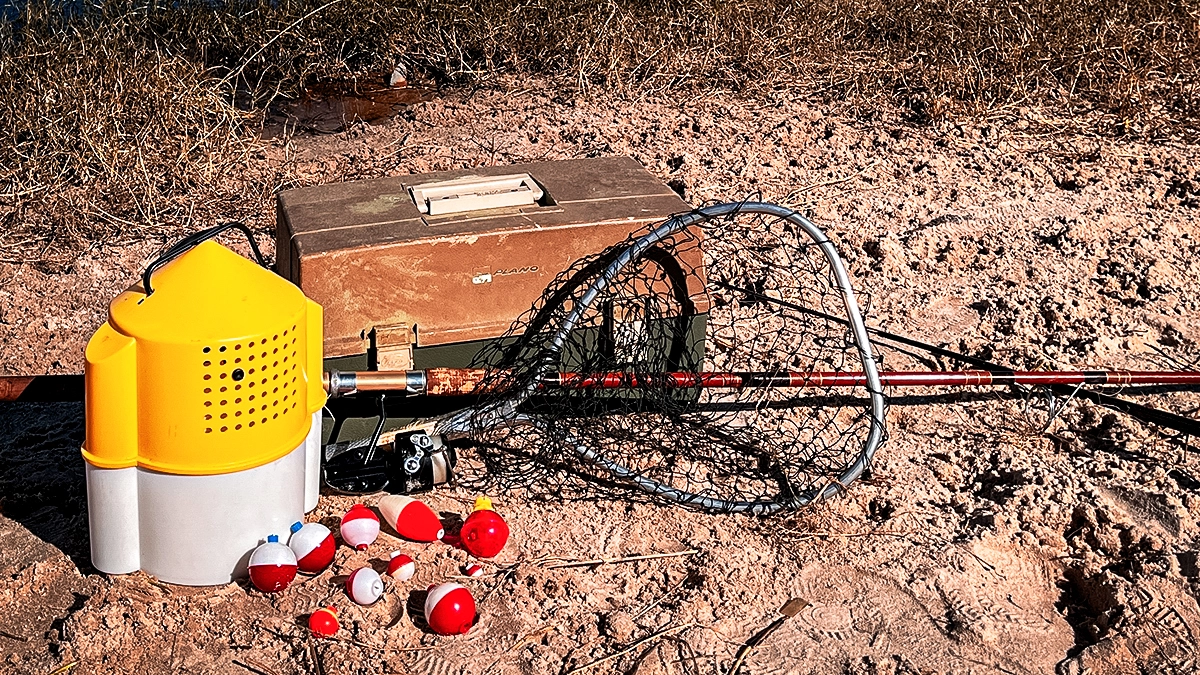
Bobbers are a great tool for beginners of all stripes and ages. I spent countless hours in the warm Colorado sunshine staring at the classic red and white bobbers as a child, hoping the one I was gazing at would flip. It taught me to be patient and quiet and to observe nature. I also learned how it felt to cast and to reel in fish, never suspecting I was acquiring a lifelong skill and passion.
For experienced anglers, bobbers offer another way to slow down and enjoy fishing again. Sometimes, bobber fishing is overlooked by experienced anglers, but revisiting basic fishing methods might bring you back to what made you love fishing in the first place. They also help control bait depth depth and you can call in big fish with popping corks.
Whether you are an angler who loves relaxing on the bank with a lawn chair, a cool drink, and a good book, or a fisherman who thrives on studying the water, winds, and waves from a boat in pursuit of “the one” bobbers are an essential tool in your tacklebox. Let’s take a look at the different types, and how they are fished.
Bobber Types
Fixed Bobber
A fixed bobber can come in different shapes, is directly attached to the fishing line and remains in a fixed position. To attach it, locate the stem side with a hook. Pop the hook out, thread the fishing line through it, and then run the line through another hook on the opposite side. This creates a snug fit and prevents the bobber from sliding on the line. A classic example of a fixed bobber is the traditional red-and-white ball bobber, also known as a round fixed bobber.
These have their limitations, though. Because they are fixed to the line, they can hinder casting. And the depths at which they can be fished is also limited, as you must be able to control the line trailing underneath the bobber. The best application for these are probably panfish in shallow water from a dock or boat, but they also have their place with trout or even catfish if the water is shallow enough.
Bubble Floats
Bubble floats, also known as casting bubbles, are used more to aid in casting than for bite indication and are relatively simple to install. Simply thread the line through the float, fill with water leaving just air to make it float easily and add a line stop to keep the float at your desired distance from your bait, lure, or fly. Bubble floats are often employed by spin anglers in single hook artificial-only areas, effectively letting them use flies. They are also great for propelling really lightweight baits such as crickets or grasshoppers.
Cigar Floats
Frequently used for bluegill, crappie and similar panfish, cigar floats are generally made of foam, can be weighted or not, and resemble a long cigar. Easily secured with a top and bottom line clip the thin profile makes them less easily seen by skittish fish and the shape increases the bite sensitivity for the fisherman. To make these telegraph even the lightest bites, you can add weight just below the bobber to make it even more reactive.
Waggler Bobbers or Floats
Waggler bobbers or floats are pencil-thin bobbers of varying weight where the line is attached only to the bottom and can be made of foam, plastic, cork and wood. Wagglers are available in various sizes and weights, determined by the depth and water current being fished. Commonly used in freshwater, for carp and similar species, the slim profile waggler is traditionally used with a waggler rod which has a very sensitive tip allowing the fisherman to easily detect even the smallest nibble.
Spring Bobber
A spring bobber is easy to adjust for depth. To attach it to the fishing line, simply pull the spring back and place the fishing line in the notch, looping it if you want it to be more secure, and slip the spring back into place. This allows for rapid depth changes, making them ideal for anglers covering water and trying to dial in the precise depth at which fish are schooling. Once hook ups are made, everyone can quickly adjust their depth and get in on the action.
Popping or Clicking Cork Bobber
A popping or clicking cork bobber is outfitted with internal and/or external beads that mimic the sounds of prey and create commotion on the surface, particularly in calm water in order to attract the attention of fish — think of these as poppers that have the added benefit of telegraphing a bite. These are most commonly associated with redfish fishing, but they can be a good way to lure in a variety of predatory fish including speckled trout and flounder. Typically, they are fished with a piece of shrimp or other dead bait trailing the popping cork by a few feet.
Dink Floats
Dink floats are similar to cigar floats but are generally made of a soft pliable foam frequently with a brightly colored cork attached to the top for easy viewing. Dink floats are closer to what fly anglers call a strike indicator than a traditional bobber, and are easily attached by threading the line through the body and adding a line stop to keep it in place. They flat on the water until a fish bites, then they stand up, easily indicating even a subtle bite.
Slip Bobber
Slip bobbers are slightly more intricate to set up but are useful especially in deeper water for fish including walleye. These bobbers “slip” up and down the line and are not stationary. This lets you cast them easily, as the weight of the bobber slides down and combines with the weight of the bait or the lure and forms a compact package that flies through the air together. You can set the stop to just about height above the bait, letting you get deeper than most other styles of bobber.
Each slip bobber will need a bobber stop, made of thread or rubber. This will be the first thing you slide onto the line, followed by the accompanying bead, bobber, and finally a small split-shot sinker or swivel to add weight and prevent your jig or hook from getting stuck on the bottom of your bobber.
Adjusting Bobbers for the Conditions You’re Fishing
Bobbers are used across a wide range of applications, such as lake fishing, sea fishing, and rivers or streams, while fishing for panfish, walleye, and myriad saltwater varieties as well. After I graduated from red-and-white ball bobbers, I worked up to water-weighted bubble floats. While I couldn’t see them as easily, neither could skittish high-country brook trout. They were heavier than the ball bobbers, so they allowed me to cast farther.
The weight and size of your bobber is important in relation to the fish you are trying to hook and the weight of the bait you are using. Too much weight on the bobber, and you won’t see it well; too little, and your cast might fall short. Some bobbers are weighted for balance and to assist with farther casts.
Basically, the size of fish you are trying to catch and the weight of the bait determines the size of the bobber needed. You want the bait to be suspended just enough that the bobber remains visible on the surface, but the slightest tug from below pulls it under. Understanding the conditions you will be fishing in is crucial. It is important to study the wind, weeds, depth the fish are holding at, and the species you’re chasing.
A bobber is also useful in holding bait off the bottom, so knowing the general depth you are fishing is necessary, too. What are the habits of the fish you are trying to catch? If you are fishing in a deep lake and the fish you are after is only a few feet from the surface, you might need to adjust the distance from your bobber to the hook or jig.
Walking into a store with countless tackle options can be overwhelming. Choosing the right bobber or float may take some trial and error, but once you grasp the basics, you will feel more confident in your choice.
Bobber History and Collectability
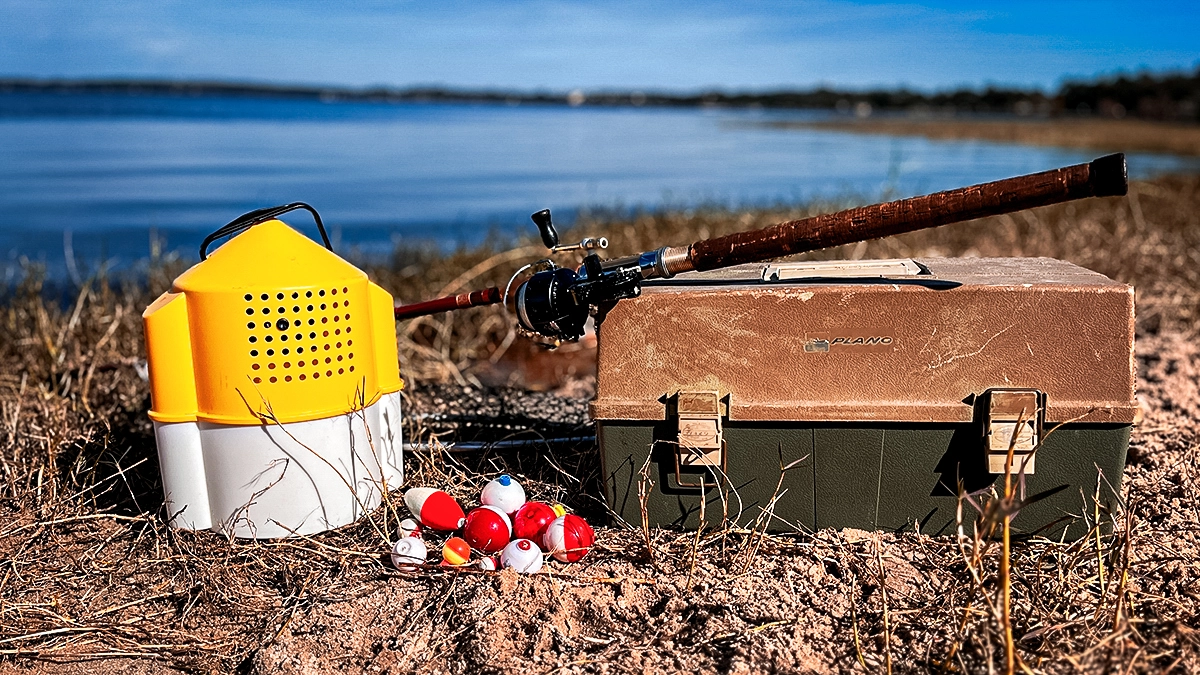
Though there is no easy answer as to when bobbers were first invented, many brightly painted vintage, artistically beautiful bobbers have been made in various sizes and styles through the years with funny names like Catch-Nibbler, Fishing Gazette Bungs, and Deep-O-Bob.
The basic concept of a floating device that marks a line and indicates a hit or bite is truly ancient. In Egypt, in the days of the pharaohs, floats were made of hollow reeds that could be suspended at a set depth. In China and Japan, fishermen used cork and bamboo for hundreds of years for the same purpose.
In Europe, something we would recognize as a bobber showed up around the 16th century made of hand-carved wood, cork, or bone.
Like most gear, bobbers became mass produced during the Industrial Revolution, and became more standardized. The now familiar red-and-white striped, round version everyone knows so well started showing up in the late 1800s.
Of course, there are now people out there who still make bobbers by hand; bobber artists created a name for themselves by carving and painting their bobbers in unique patterns. Take a gander at vintage fishing bobbers on eBay and you might find a new fishing-tackle collecting addiction.


